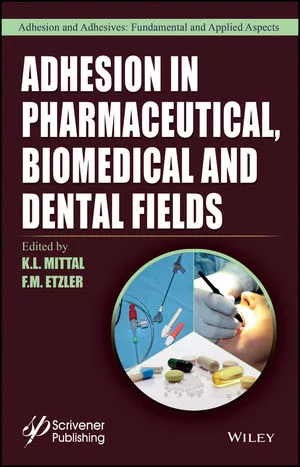Solutions in Silicone
Silicone's coil-like structure has enabled the creation of a wide range of previously unimaginable products.
The second most common element on earth, silicon represents 28% of the earth’s crust and is found in sand, silicates, and many minerals such as quartz. Silicones are synthetically produced linking silicon and oxygen atoms into long polymeric chains, which form coil-like structures. These polymeric coils look and function like shock absorbers.1 The coils perform like no other molecule; they can coil and uncoil readily based on environmental conditions.2
The coils are found in physical forms that range from gases to brittle solids, and are manufactured in a wide range of viscosities, densities, structures, and functionalities. The coils’ unique combination of properties fueled the creation of an industry, which created a wide range of previously unimaginable products.
Unique Properties
Silicone’s unique properties span a range of capabilities. The most notable is extreme temperature range capabilities. Silicones are stable from temperatures of -90-330°C. This wide range is in contrast to most organics, which start freezing above 0°C and begin to discolor and oxidize at 120°C. Silicones are very well-suited for outdoor use due to their high weathering capabilities from the inherent ultraviolet (UV) and oxidation resistance. Silicones are unlike organics, which will discolor and crack over time.
Silicones are also ideal for electronics applications, as their electrical insulation properties are close to glass. In addition, their exceptional high resistance to ozone and corona discharge enables their use in high-voltage applications. They offer superior water resistance and stability in water immersion applications, as they are found in a range of aquatic apparatus. As a rubber, high compression set resistance enables silicone’s use in gasketing and seal applications. Its natural adhesive qualities enable use in conveyor belts used in ovens for baked goods, as well as flexible molds for casting plastic materials and low-melting metals.
Silicones offer exceptional UV resistance, which is used in high-energy lighting, instrumentation and solar power applications. After being heavily researched in the artificial heart project of the 1950s and ’60s, silicone’s biological compatibility has enabled its use in a variety of implant, wound care, and drug delivery applications.
Applications Dictated by Properties
There is no single silicone market, but rather thousands of niche markets spanning many industries, disciplines and functions. Following is a small sampling of the unique applications that are possible from this very versatile material.
One of the first applications was in World War II, when silicone rubber gaskets were used in searchlights and superchargers for the B-29 in 1943.3 No other gasket material held up to the extreme temperatures. In the late 1940s, this main use generated an industry. Industrial gaskets and seals, along with high-temperature rubber part applications, caused the marketplace to explode. It expanded into automotive, aerospace and specialty markets. At this time, the silicone heat-cured rubber industry was established.
Prior to 1947, silicone antifoams were used in industrial applications. Based on a very low surface tension, they instantly eliminate foams. In the ’50s, the foam suppression capability of silicone fluids was used in the manufacture of polyurethanes, which enabled a uniform cell structure. In 1948, the first silicone emulsions were developed, which enabled modern tire molding based on silicone release agents. Silicone polydimethylsiloxane (PDMS) is naturally abhesive, which functions very well as a release agent. At this same time, silicone auto and furniture polishes were in widespread use. In addition, the unique masonry and textile water repellency capabilities were capitalized on.3
Room-temperature-vulcanizing (RTV) silicones were the first silicone rubber product to be widely accepted for the consumer marketplace. They have been in widespread use since their introduction in 1960. Silicones are preferred over other adhesive sealants due to their ability to withstand temperature extremes and offer unprimed adhesion to a variety of substrates. They have found use in construction, glazing, medical, aerospace, aviation, industrial, electrical, electronic and automotive marketplaces. Silicones used in construction applications amount for the lion’s share of silicone consumed today.
Silicone RTV adhesive sealants for gasketing applications are widely accepted for automotive fluid sealing applications, due to their ability to withstand typical under-hood high temperatures. Silicones are also used in the refrigeration industry, as silicone is the only elastomer to remain flexible well below freezing to -45°C. This capability has resulted in its application in aerospace applications. As the only flexible elastomer at low temperatures, silicone was the first thing to touch the moon in 1969, on the moonboots worn by the astronauts. In addition to low-temperature flexibility, UV resistance has dictated silicone’s use in satellite and spaceship applications.
In electronic encapsulation applications, such as in some cell phones, silicone gels function as vibration dampeners, dust and water sealing, and as mechanical shock/impact absorbers, all while maintaining electrical insulation properties. Their low modulus and high stress dissipation capabilities result in built-in vibration dampening and dictate their usage. In addition to their high corona resistance and resistance to high-voltage ionization, silicones are inherently very good electrical and thermal insulators. This results in silicones being found in a multitude of high-voltage electrical and electronics applications. Wire insulation and cable terminations are also very typical silicone rubber applications. There they can carry 90% more current over typical organic cable materials of the same size.3 Also, when the wire insulation is burned, a thermally and electrically insulating outer ash is formed, maintaining the service capability.2
Silicone’s thermally insulating properties can also enable extremely hot flat rangetops to be mounted to wood frame counters. In addition, specialty grades of silicone rubber are used in thermally conductive applications like speakers and laptop computer heat sinks. Electrically conductive grades are used in touchscreens, electromagnetic interference (EMI) and radio frequency interference (RFI) applications. Other specialty grades can be formulated to be flame resistant.
For more than 40 years, all glass aquariums have been assembled with silicone RTV sealant due to its long-term water resistance with excellent adhesion to glass. Another unique application is permanent trouser leg seams, which are now formed with RTV silicone.
The very high free volume in PDMS is due to silicone’s unique spacing between atoms, causing the polymers to be highly permeable to gases and liquids. These capabilities enable some unique medical applications, including:
• Incompatible materials, such as drugs, can be incorporated into silicone rubber pressure-sensitive adhesive (PSA) patches. The drugs are located in these free spaces within the silicone rubber product matrix. At designed rates that are controlled by rubber formulation (e.g., filler level, type, other additives and crosslink density), the drugs are then released. The agents slowly bleed-out of the silicone matrix and can be absorbed through the skin. Drug delivery is a relatively new application and can provide any range of agents from vitamins and medicines like nitroglycerine to antibiotics.
• Unfilled silicone rubber has a 10-times higher permeability of many gases over natural rubber.4 Oxygen enrichers function based on the high permeability of oxygen through a silicone membrane. They raise our atmospheric oxygen level of 20.9% to 40% for a continuous patient supply. These enrichers are very useful and are in widespread use for people with respiratory impairment.
The high free volume also enables glazing and highway joint sealing. A particular advantage of RTV silicone sealants is their ability to accommodate joint movement between components. Joined parts of glass and aluminum in window assemblies, as well as steel and concrete found in bridges, each have significantly different coefficients of thermal expansion and contraction. Through the course of wide temperature swings, the silicone sealant functions as a shock absorber, accommodating the movements while maintaining the seal.
Due to their unique combinations of properties, silicones are the materials of choice in dental and prosthetic applications to rapidly make accurate impressions and reproduce life-like prostheses. They are also commonly used to make heart valves, long-wear contact lenses, balloon catheters and replacement finger joints. In the past several years, many consumer silicone products have also hit the market. Molded products like silicone rubber baking pans, spatulas and oven mitts are being found in kitchens across the U.S.
Silicone rubber can have many forms. Thixotropic pastes do not flow even when applied in vertical assemblies, such as in glazing applications. Others won’t flow even under high pressure testing, displaying a high green strength. Flowable products are self-leveling liquids, which are suitable for narrow access encapsulation of electronic assemblies. Low-viscosity sprayable versions have found utility in thin film coating applications such as the conformal coating of circuit boards and mold release agents.
Editor’s note: This article is based on excerpts from Chapter 1 of The Silicone Elastomer Handbook by David M. Brassard. For additional information, visit www.siliconesolutions.com.
References
1. Andrianov, K.A., Metal Organic Polymers, Interscience, New York, 1965, p. 2 ff.
2. Bobear, W.J., “Silicone Rubber,” Rubber Technology, Morton, M. Ed., Van Nostrand Reinhold, New York, 1973, pp. 368-369.
3. Meals, R.N. and Lewis, F.M., Silicones, Reinhold, New York, 1959, p. 6 ff.
4. Arkles, B., “Look What You Can Make out of Silicones,” Silanes, Silicones and Metal-organics, Arkles, B., Ed., Gelest, Tullytown, Pa., 1998, p. 437.
5. Torkelson, A., “Developments and Trends in Silicone Fluids,” Silicone Technology, Bruins, P.F., Ed.,; Journal of Applied Polymer Science, Applied Polymer Symposia #14, Interscience, New York, 1970, p. 64.
Looking for a reprint of this article?
From high-res PDFs to custom plaques, order your copy today!





